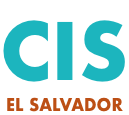"My Volunteering Experience in the Clean Water Program", by Kevin Hernández
By Kevin J. Hernandez (Civil and Environmental Engineer)
University of Nevada, Reno
Clean water is a human right!
With over 90% of the country surface water contaminated and 1.6 million people with no access to clean and portable water, El Salvador is fertile ground for clean water initiatives and programs. One such program is CIS, Centro de Intercambio y Solidaridad, who (with the help of Clean Water For the World) has helped to provide clean water systems to over 3,000 families in over 40 communities.
Using a simple and adaptable system that utilizes a U-V Light Chamber used to destroy bacteria and viruses, the unit has the capacity to provide water for a community of up to 600 persons, purifying water at up to 300 gallons per hour. There are now over 300 of the systems installed and CIS continues to connect with local officials and leaders in the community to identify places of need and areas of improvement.
During my time with CIS, I was assigned with Don Luis Aristides Aguillon, a clean water for the world promoter who’s been with CIS for over 15 years. Our task was to visit many of the communities using the U-V light chamber systems and make repairs or to completely install a new units altogether. This was both an exciting and humbling experience for me as it would mean getting to get my hands dirty with the installation of water purification systems in communities that really needed it, as well as see first hand at how many of these communities really benefited from the work that we would be traveling week in and week out to complete.
The unit is built on a 6 component filter system powered by a solenoid electromagnet (see diagram on previous page). The first component of installation begins with a hose to water source where contaminated water enters from the source, under pressure or gravity-fed, through a hose or PVC pipe into a 5-micron filter. Water is then allowed to flow through the UV lightbulb housed in a quartz glass tube (used to keep it dry) by the solenoid electromagnet. Once the water passes through the UV Light Chamber, it becomes purified and safe to drink through the faucet. The last component is ballast functioning as the counter, which energizes the UV lightbulb, signaling when something may not be functioning correctly with the purifier.
One my favorite and impactful excursions was when we visited la Isla Tasajera, an island in La Paz, El Salvador off the Coast of the Sun (Costa del Sol). There me and Don Luis visited “Cantón San Rafael Tasajera,” the local elementary school to the island that services the children of the 2000 inhabitants that live on the island. After a 25 minute boat ride across the ocean canal, we arrived on the island and found the current water purification system not functioning properly, having been placed out of commission for over two months by the staff.
While we found the battery systems to still be in working order, the unit needed new filters and glass tubing, both crucial elements that leave the water clear and safe to drink. In fact, the 5-micron filter was found black and the water coming out of the faucet a murky and cloudy brown. After the installation of the new materials the water purification system was back in commission with the students of the school able to freely use the water to drink or wash materials once again. We also took the time to educate the staff on proper maintenance practices so that the system stays functioning and in use until it’s next servicing done 3-6 months later (typically done by CIS).
Scholarship Program
Another very enriching experience involved working with the high school and university scholarship students that CIS Sponsors on a yearly basis. CIS sponsors over 500 students a year, helping to finance students in under resourced areas where education is often not offered past the 6 grade. With these students, we work with them to develop a community service project as well as provide them with tools on leadership and success that they can use in their education and career pursuits. One such community service project in San Pablo Tacachico involved students maintaining and caring for their local community park. This included watering plants, weeding the fields and picking up any trash that would accumulate over time. Being an intern for this summer’s cycle also had me speaking to the students and their parents on my own educational journey in the United States and how I hope to use my education in civil engineering to help service and assist underdeveloped areas and communities such as theirs. While they may have been left inspired, I was equally inspired to see so many students and families wanting to make a change in their community both through word and action.











